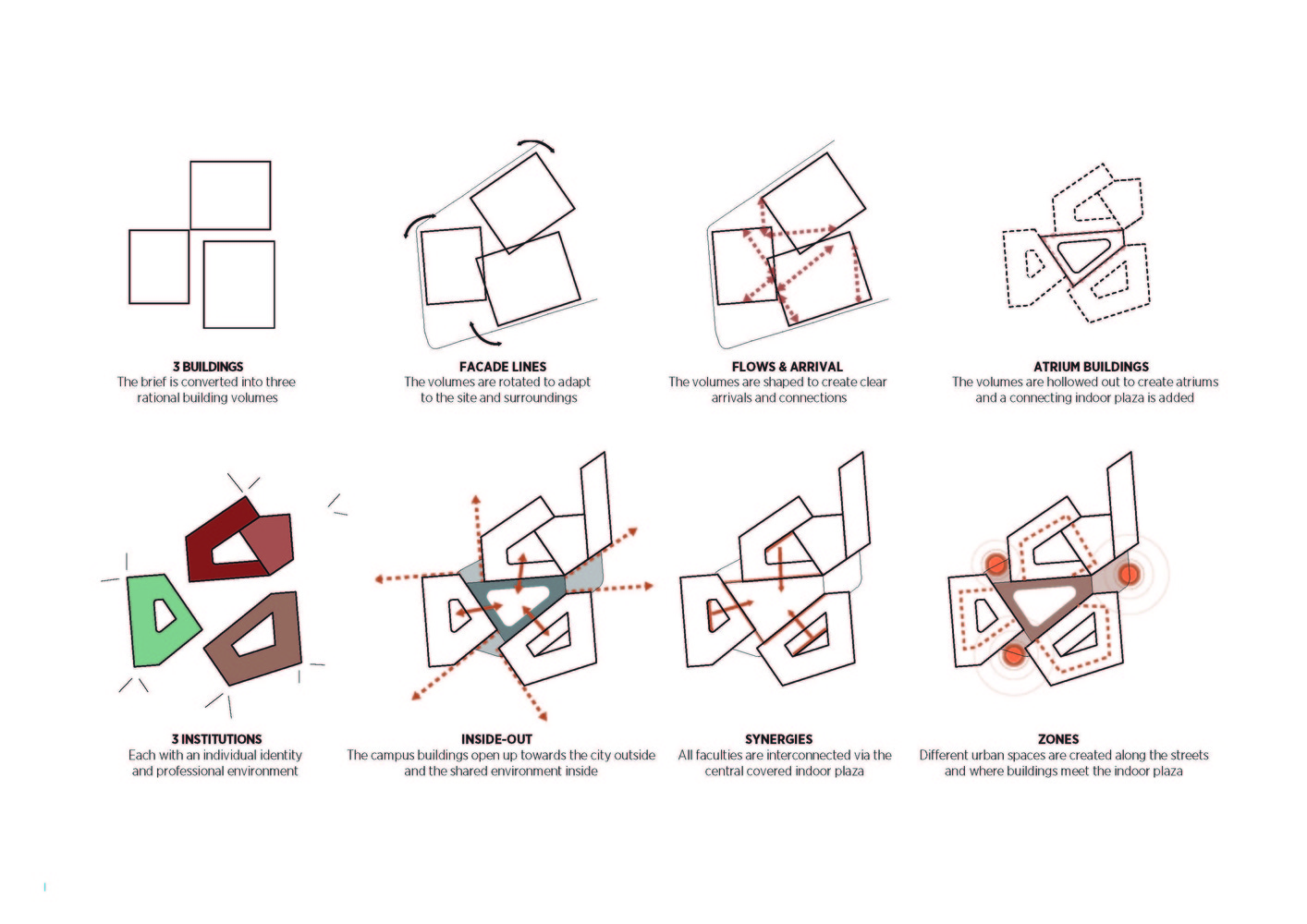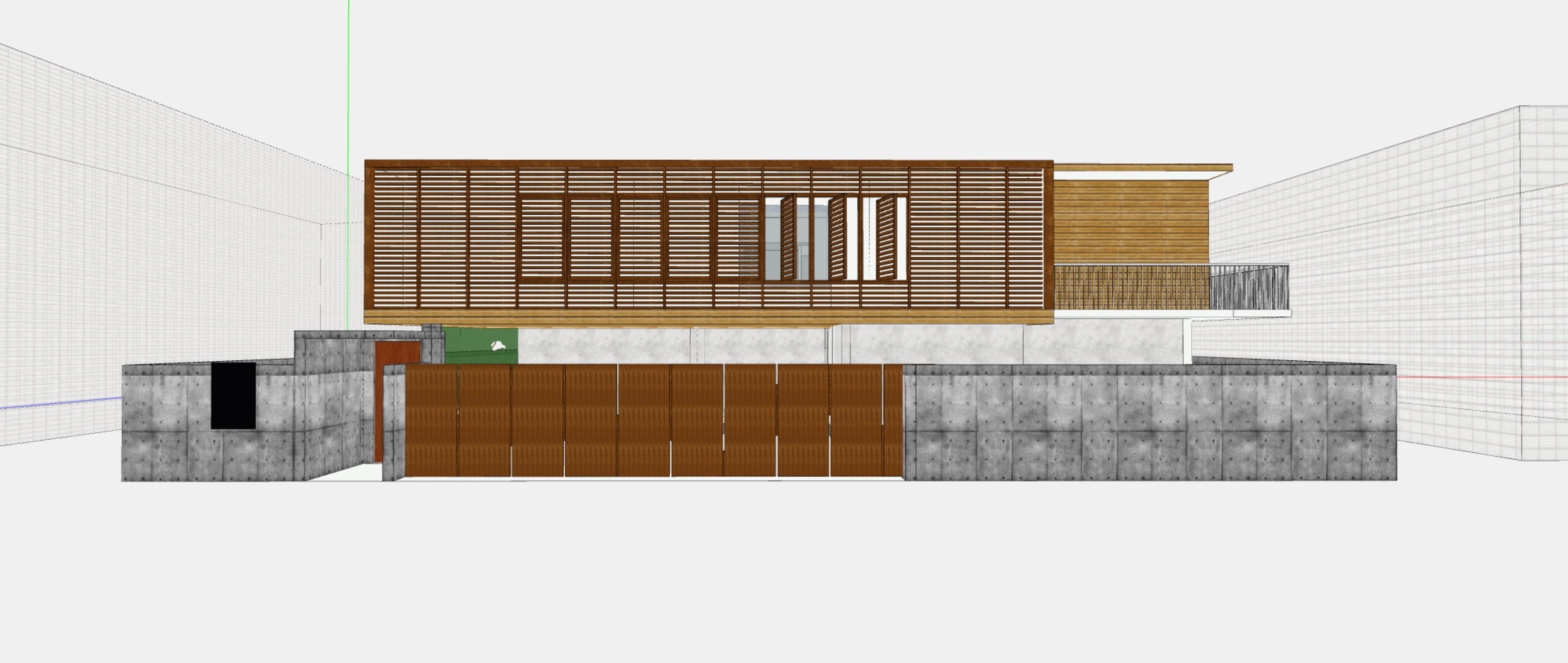Simple Guide to Architectural Concepts for the Architecture Student

Designing without a concept is like going on a road trip without a map; sure, you’ll end up somewhere, but probably not where you meant to. A strong concept acts as your compass. It helps your ideas stay focused and intentional.
For architecture students, learning how to build that compass is a game-changer. Let’s break it down.
What is an Architectural Concept?
A concept is an idea, a theory, or a notion. In architecture, concepts provide a direction or approach to the design.
Architectural concepts are the backbone of a design. They tie everything together into one cohesive story. Sometimes, architecture students think that a concept has to be evident in the design. But that’s not necessarily the case. Concepts are rather like maps and help you when you're lost. Moreover, concepts can evolve with the design and are not set in stone.

An Example of Architectural Concept Development. Image Credits: C.F. Møller Architects
Why Students Struggle with Concepts
Coming up with a concept sounds simple until you have to do it. Many architecture students hit a wall here, and it’s normal.
For one, no one teaches how to build a concept. You're just expected to have one. That can feel confusing.
Sometimes, it’s hard to tell the difference between a concept and just a cool style. Other times, you might have too many ideas and not know where to begin. Or worse, you’re scared your idea isn’t “good enough,” so you freeze.
Truth is, every architect has been there. It’s not about being perfect; it’s about learning how to think. And that takes time.
Below, we'll break down how to come up with strong architectural concepts step-by-step. We'll also touch upon the benefits of using software and its downsides at this stage.
Getting Started with Concept Development
So, where do you even begin with developing a concept? For many students, the pressure to have the ‘perfect concept’ right away can feel overwhelming. I get it! But concept development doesn’t have to be intimidating.
Architectural design is evolutionary. You can gain inspiration by looking at the surroundings, climate, culture, and people who’ll be using the space. These are some of the clues that can spark ideas.
You don’t need to rush it. Concepts evolve, and it gets better as you explore and sketch. The key is to begin with an open mind and trust the process.
Analyzing the Site and Design Brief
Before you start doodling, start by collating project data, conducting a site analysis, and understanding the brief thoroughly. You might spot some immediate challenges like a rock in the middle of the plot, harsh winds, sandy soil, or views facing the southwest. Essentially, we're breaking down the design problem to its bare bones to simplify it.
Generating the Design Idea
These findings are the starting point of a design concept. You can use one or some of these findings to come up with a design idea. For example, it could be a specific way of orienting, shaping, or stacking the building. It could even be the detail of a building element or a representation of a particular space. There are no rules here. So start sketching or writing down your thoughts. Don't worry about the details yet; every idea is a unique path to solving the design problem and a concept to explore.
Refining and Developing the Concept
The next step is to develop and refine the concept(s) into one cohesive narrative. We created many different possibilities in the previous step, but this step is about elimination, combination, and improvement. Pick one idea that you think makes the most sense and build it up.
Drawing Inspiration from External Sources
Concept development is not particularly linear. So there are ways to go about the development phase. For instance, you could borrow ideas from secondary reference points like design philosophy, cultural context, neighbourhood, building materials, personal experiences, geometry, etc. These elements help differentiate your design from everybody else.
If it makes sense, you may also combine ideas from the first phase of exploration. Keep going till you feel like the concept is taking shape and is ready to be tested for practicality.
Using Software in Concept Development
While some Architects shun the idea of using software for concept development, it has had a vital role in recent times.
Here’s why software can be useful even in early design:
- It helps you try out ideas quickly.
- You can see changes in real time when you adjust things.
- It makes experimenting easier, even with complex forms.
Many young Architects are experimenting with generative, computational, or programmatic design, and we have a complete guide to generative design you can check out.
Pitfalls of Using Traditional Software
However, one must be aware of the pitfalls in using software for early-stage design. We've already mentioned that they could be restrictive. But the bigger problem is that the existing tools were not designed with Architects in mind, but they were adopted by them for lack of a better tool. They are disconnected from the rest of the Architect's toolkit, like AutoCAD or Revit, and don't provide intelligent feedback in the form of data, which is much expected with the growing awareness of BIM. Hence, they are what is known as a "dumb model".
That’s why picking the right tool matters; one that supports your design process instead of slowing it down.
Choosing the Right Tools
In the early stages of design, software should aid and not hinder design development. Choosing the wrong tool can restrict your design process. Architects often turn towards programs such as SketchUp or Rhino for their fluid modelling capabilities. They are helpful to visualize the idea at scale and also provide you with visual feedback. At this stage, you may find yourself switching back and forth between 3D modelling and sketching. That is completely fine and sometimes even necessary.
Why Snaptrude Works for Early Design
These are some of the reasons why Snaptrude was built. It offers powerful modelling capabilities and data. You can ideate at speed without worrying about technical accuracy and get real-time feedback on concepts in the form of quantities, area statements, climate, and more. You could even invite your faculty to the model for design review or work on competitions with your peers. But we'll leave you to check these out on your time!
The bottom line is that software can be incredibly useful in the early design stages when used appropriately. You don't want the tool dictating your design, but the other way around.

A Conceptual Model of a Residence Modelled on Snaptrude
Wrapping Things Up
We've seen that concept design does not have to be complicated. It is simply a starting point in the design journey - a tiny idea that will eventually lead to something extraordinary. And remember, what matters the most is the journey and not the destination. Design is ever-evolving, and there are multiple ways to solve a problem.
Explore Snaptrude – where great architectural ideas take shape.



